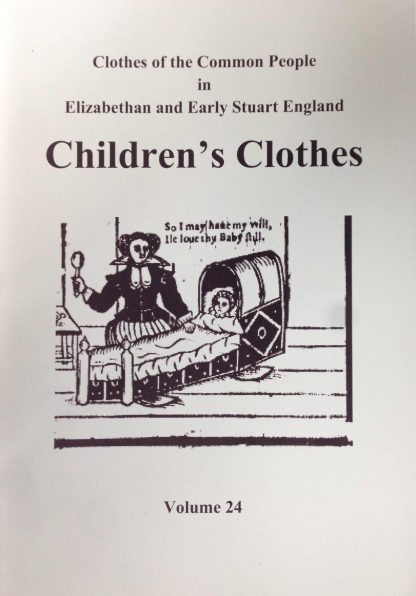Description
Author:
Stuart Press.
Summary:
What is a child? Childhood starts at birth but when does it end? At the period childhood could be considered to end for common people when they left home and began an apprenticeship or became a “servant”, most commonly a servant in husbandry as a ploughboy or dairymaid. This was normally at around the age of 13 or 14. Many children did not reach this age, about 25% had died by the age of 10 of whom around half died before the age of one.
In these 14 years child development passes through various stages particularly from immobile to crawling to toddling to walking and from incontinent to continent. The final change is from child to young adolescent at puberty shortly before they leave the family home. There were significant changes in clothing associated with these stages.
The evidence for children’s clothes differs from that for adults. Children do not leave wills and probate inventories although orphans do feature significantly in probate accounts and institutional documents. A relatively high proportion of the few surviving garments are children’s, possibly because they were out grown or the child died before they were worn out and they were then put aside for reissue, which in some cases did not happen. Children also sometimes appear in illustrations, although it is often very difficult to be sure of the age of the person shown. They do not distinguishably appear in a wide range of scenes such as executions, legal proceedings, the world of work, markets and religious scenes. Smaller people sometimes appear serving in drinking and dining scenes but these are probably young servants working. Children are to some extent invisible unless they are destitute, being murdered or at risk of drowning.
examination in the ‘Clothes of the Common People in Elizabethan and Early Stuart England’. In this series of books reconstructions are made for a range of styles of each garment. The fabrics and materials closest to the originals still available have been used and all dyeing is with period dyestuffs using period methods, mostly at the reconstructed period dyehouse in the Green Valley.
For each reconstruction patterns are provided. A description of the fabrics used and photographs of the completed reconstructions are also included.
Further details:
Softcover:60 pages
Language: English
Illustrations: Line drawings
ISBN-13:9781858042718
Product Dimensions: 21.0 x 14.6 x 0.03 cm
Staff Comments:
Resource: 2 Towers.

Reviews
There are no reviews yet.